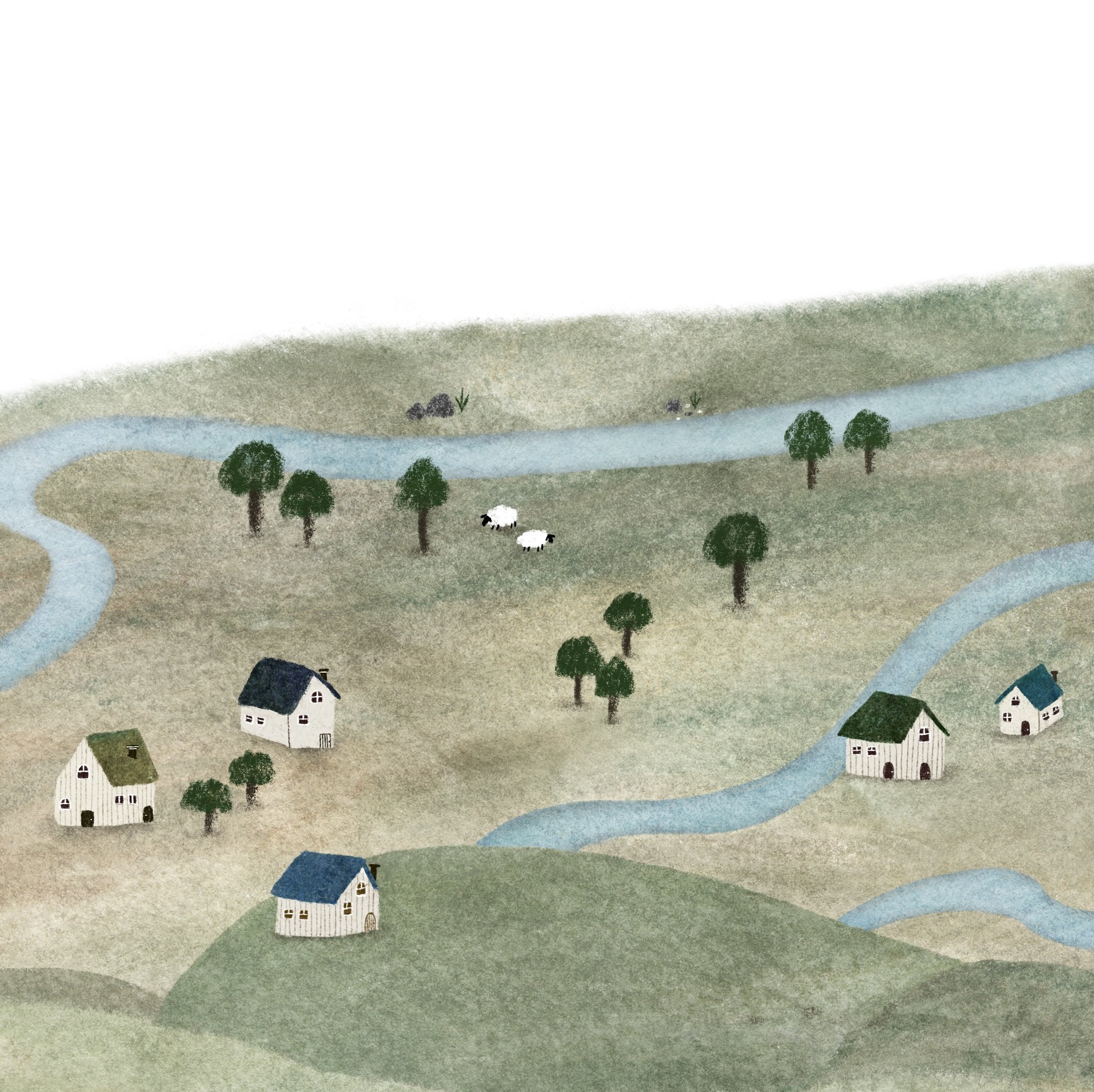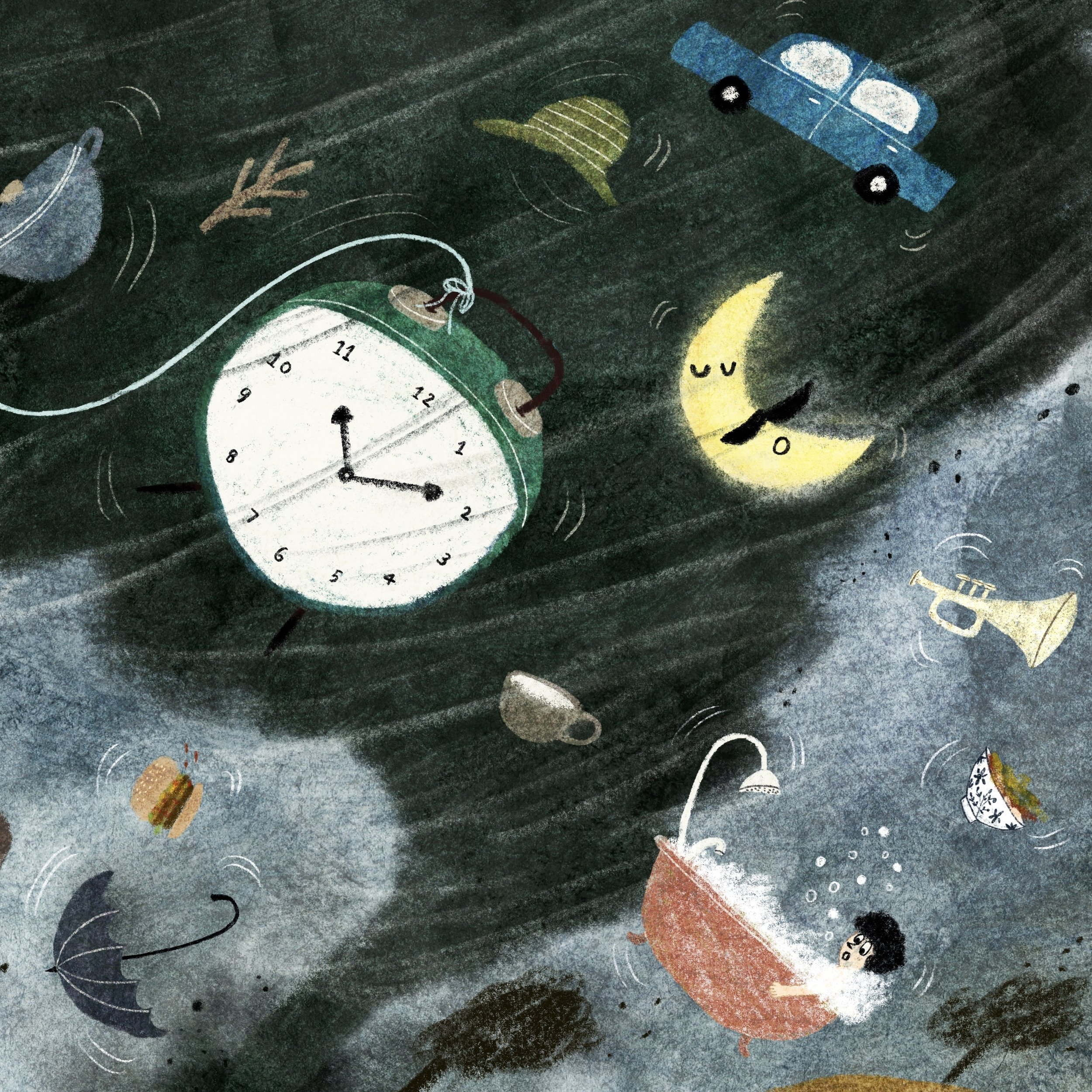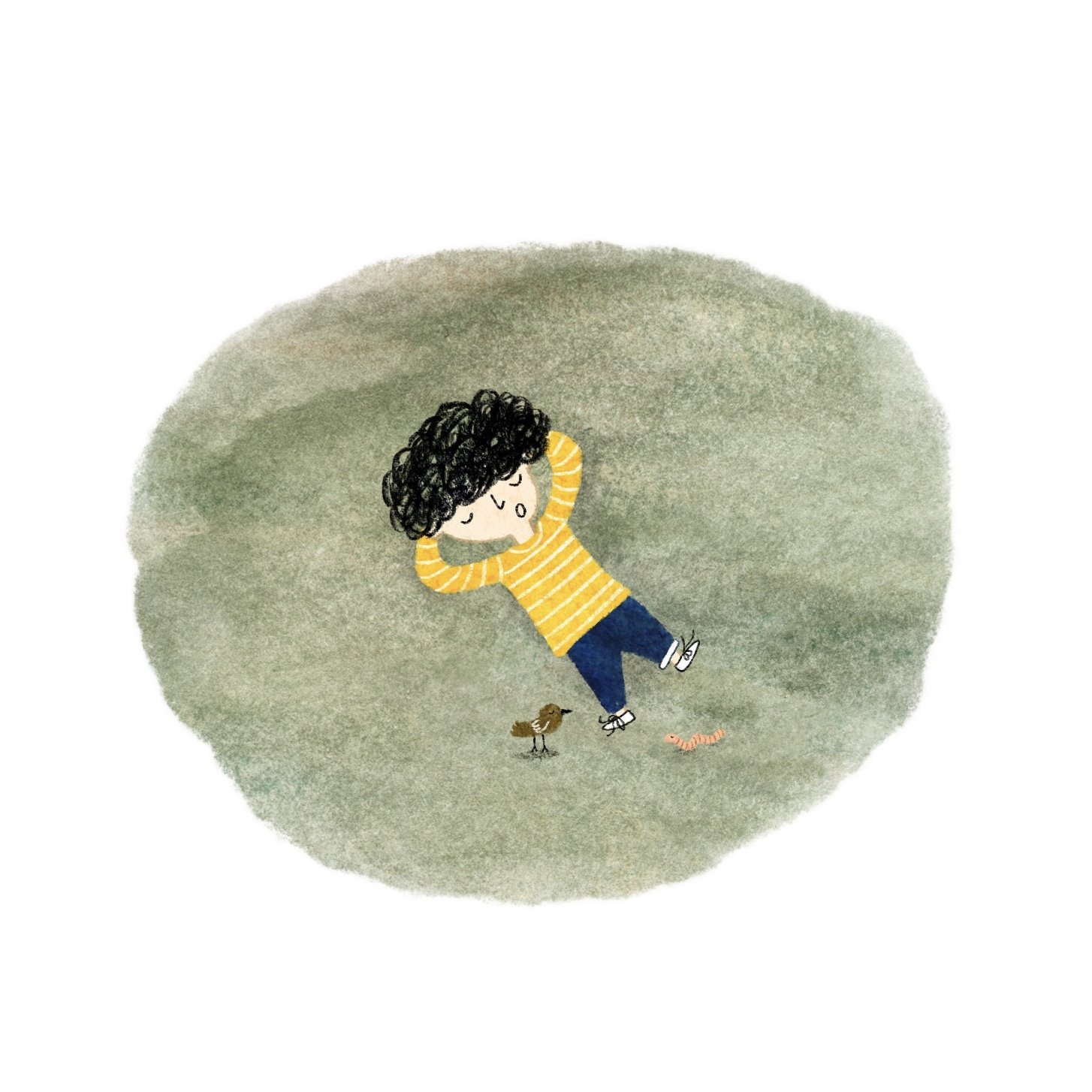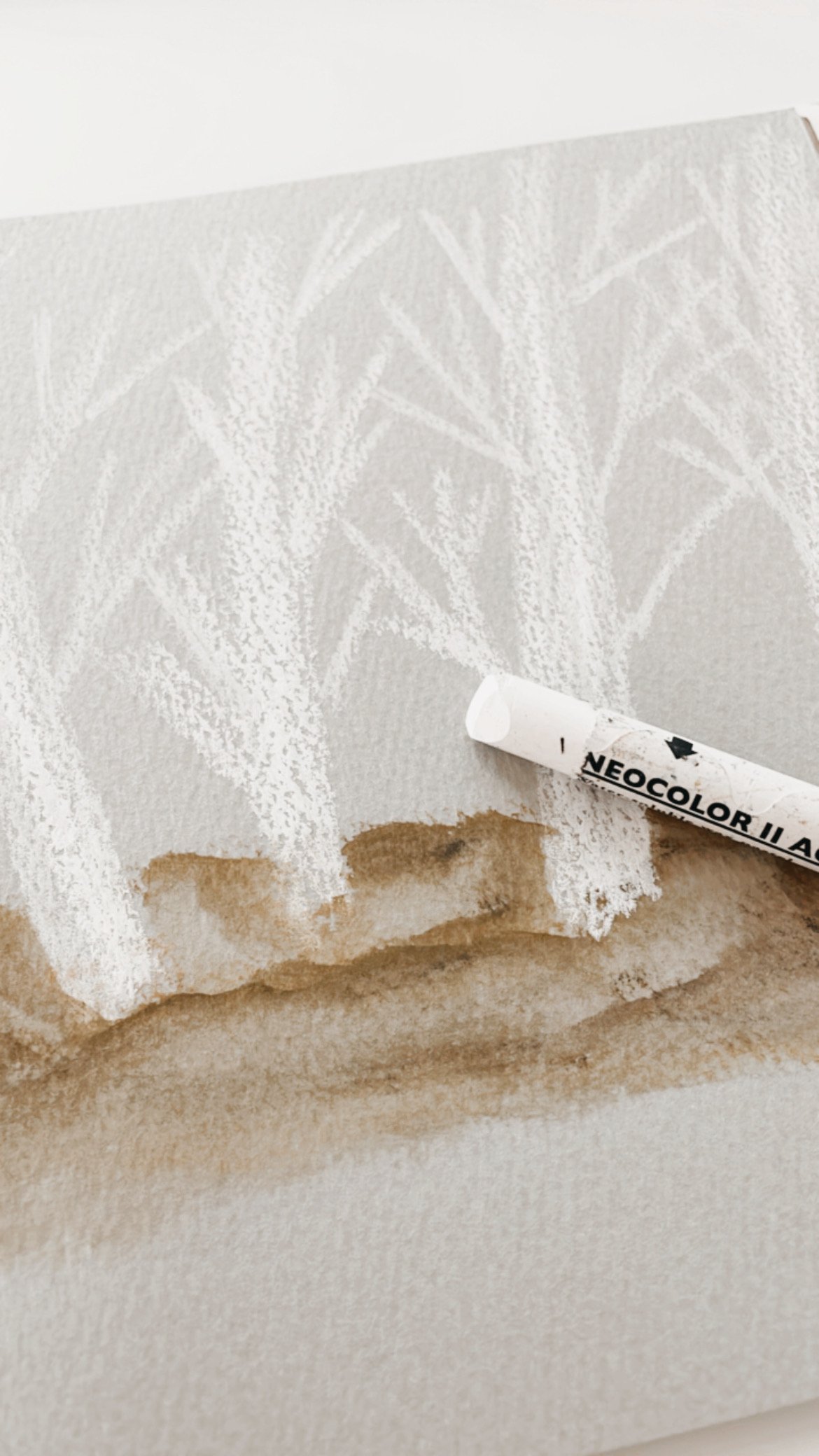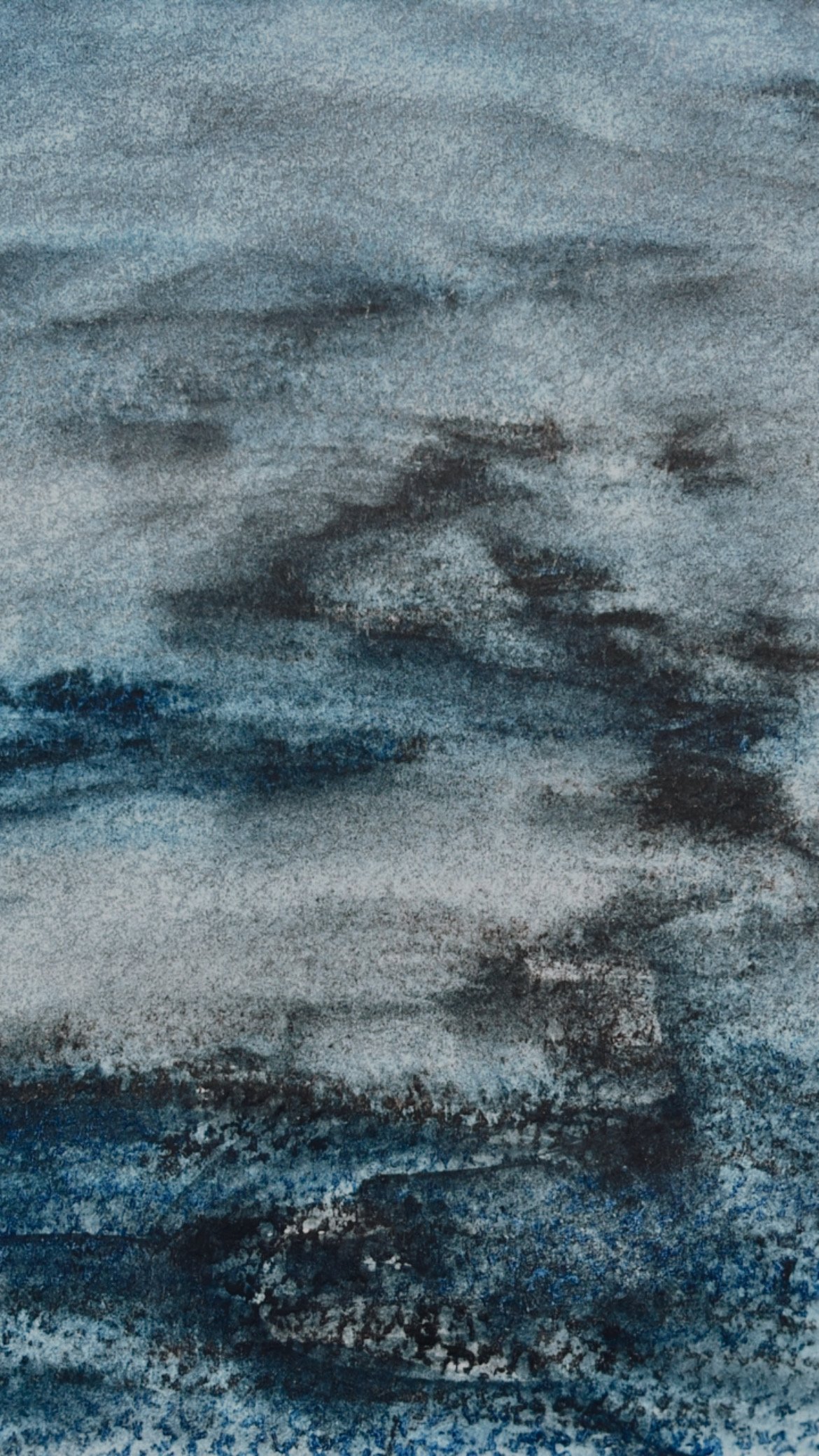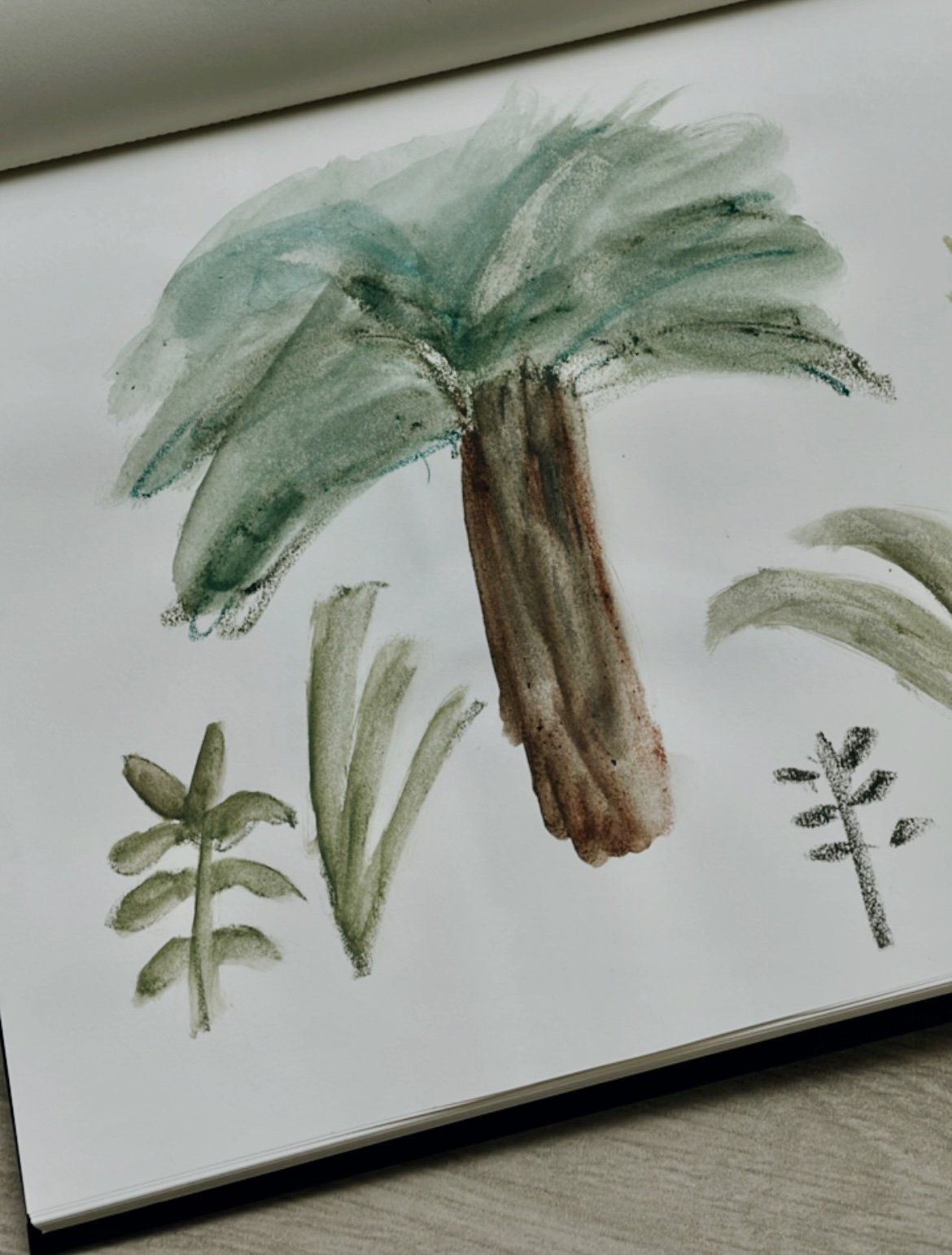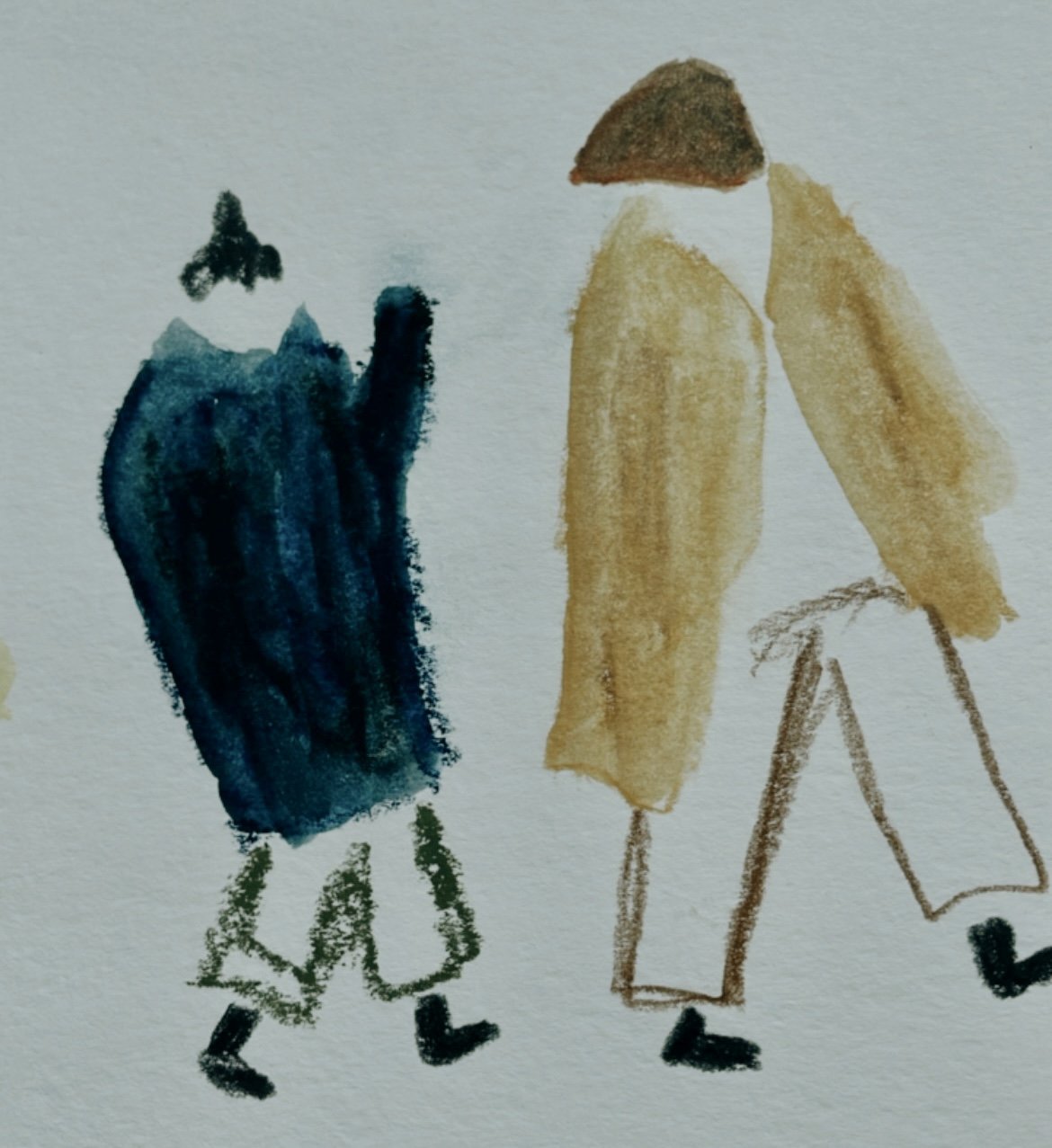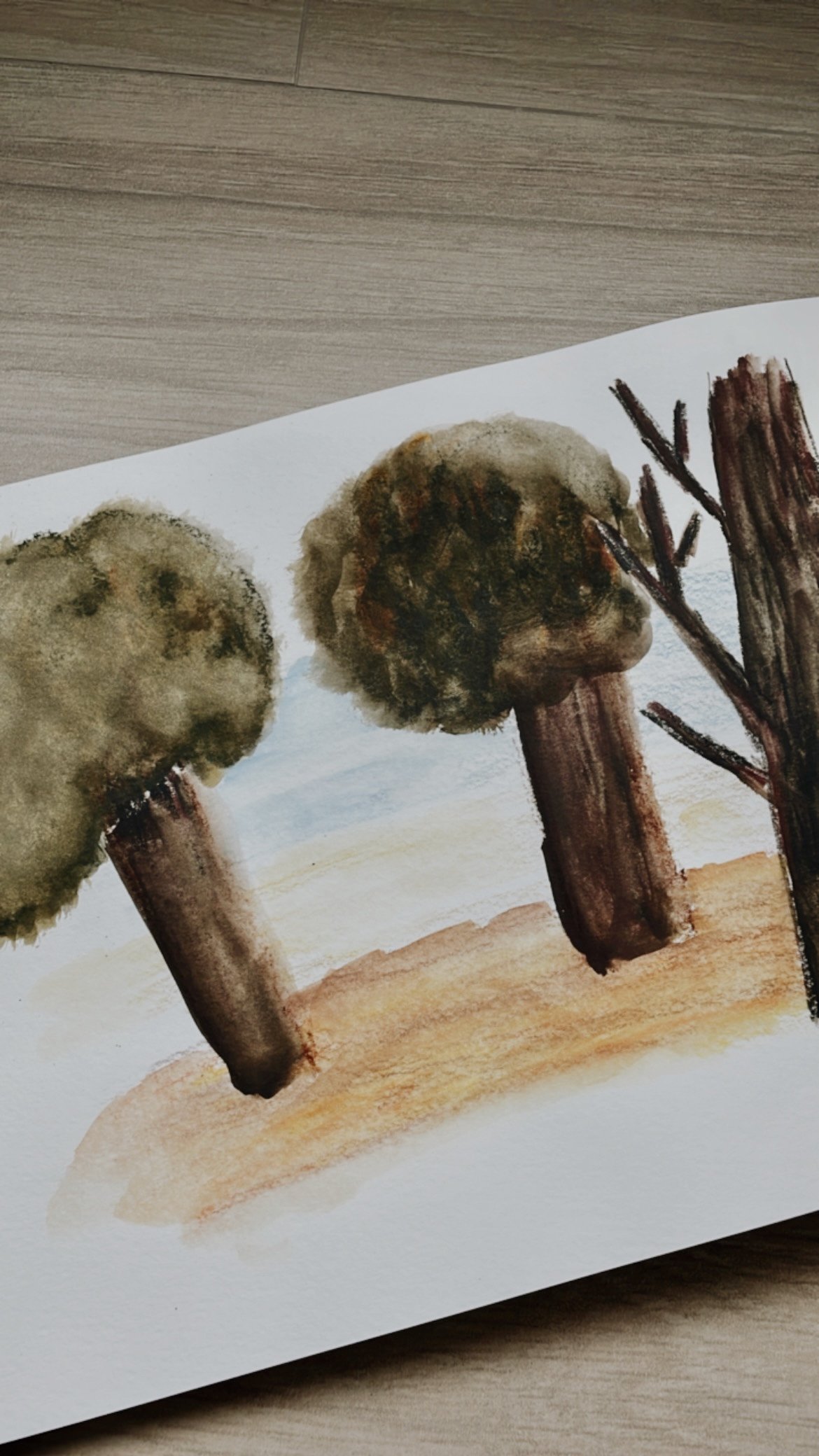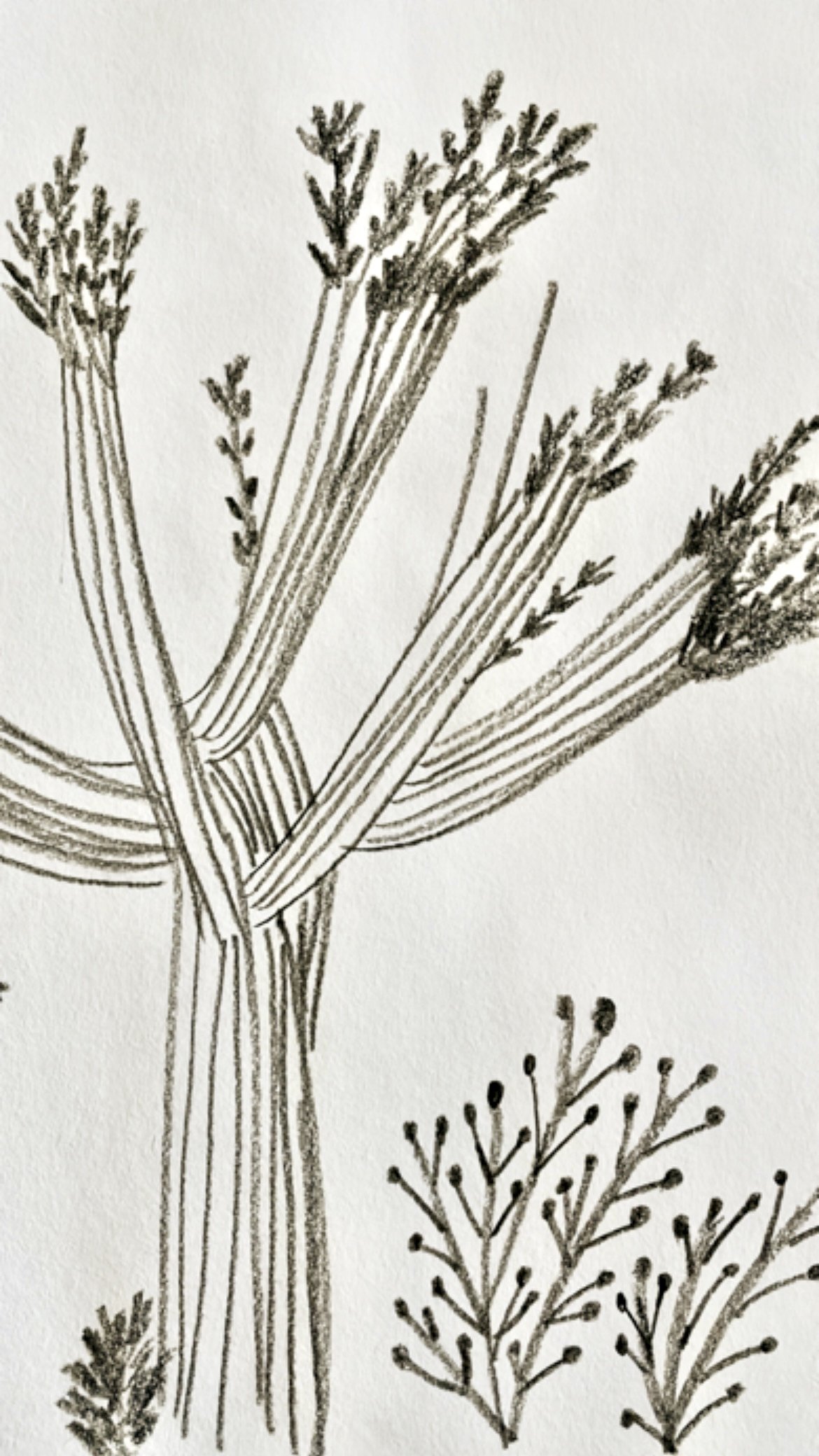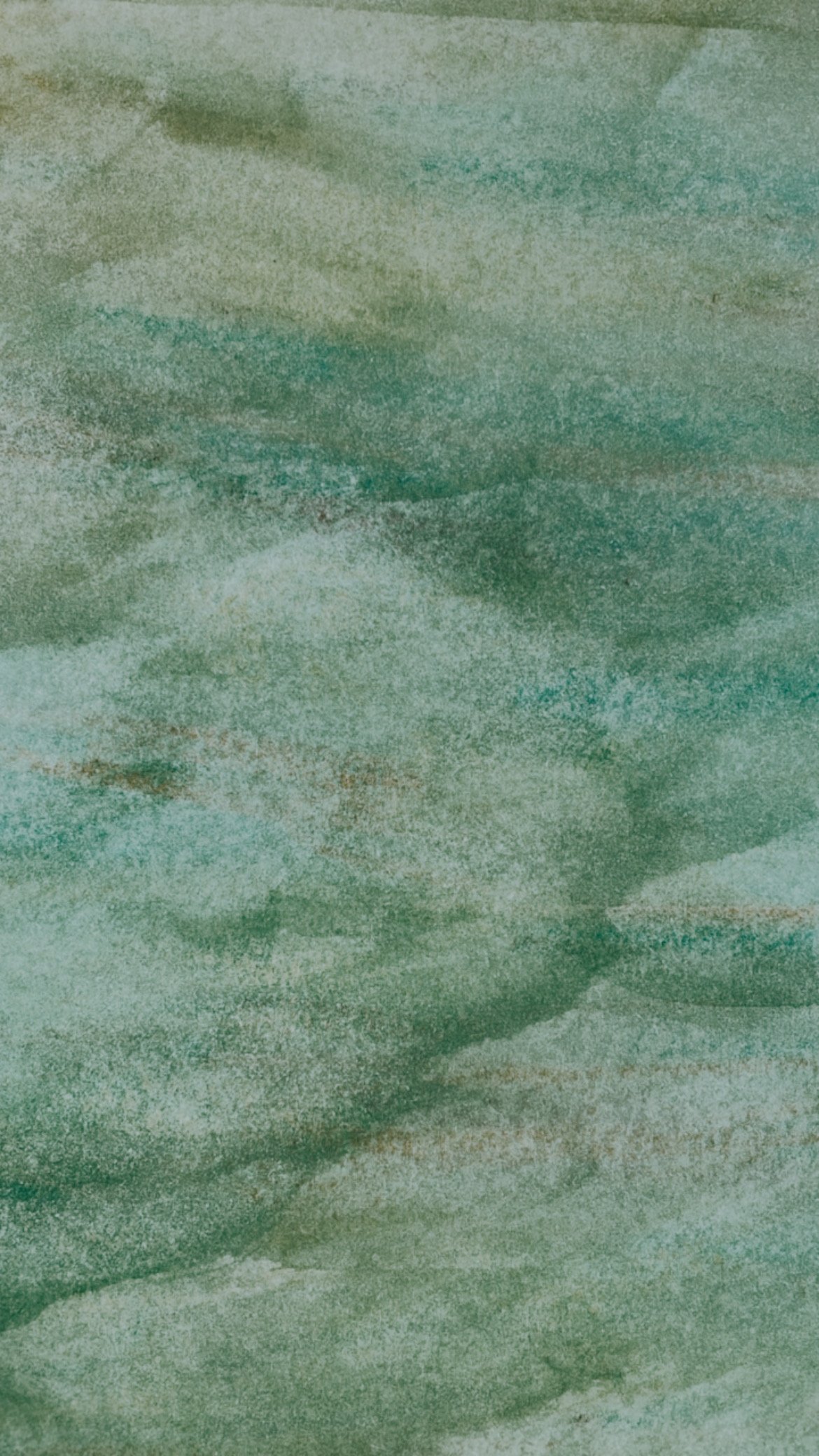It’s midway through January and this is our first blog post of the year. We’re so thankful that we’ve got a handful of new subscribers. We thought we should give a little intro of See You See Me. We’re a husband and wife duo. Kenny is the “sleeping partner” and I, Shermaine, am the illustrator behind this studio. Being the “sleeping partner” may not sound much, but Kenny actually works harder than me because on top of this, he has a full-time job. Without his support, I wouldn’t be able to do what I love through SYSM. You can read more about us.
Due to the nature of Kenny’s job, his work has already kinda set the pace for him in 2022. But for me, I chose to take an approach, that I call — ‘Slow Dance’ — for us (SYSM) this year. I’m learning to take things slow so that I can enjoy the creative process more, and so that I’m not just focusing on the finished artwork.
A slow dance requires me to pick a slow song to accompany the dance. As the tempo is slower, it enables me to enjoy every little thing. Through this metaphor, it simplifies my approach to setting simple daily routines, and keep the creative momentum going. So here we go…
Getting started.
Selecting the right paper when you’re about to illustrate a new artwork is like picking the right song for a dance. Besides the color palette, the paper subtly sets the tone and texture for the piece.
The hardest part when I’m getting started on a new piece of work is… the start. Yes, at the very beginning, when there’s nothing on the canvas. Sometimes, my creativity flows and I’ll be able to draw and paint non-stop. Sometimes, and often times, I may get stuck. And that’s where I turn to different sources for inspiration.
Inspiration is a funny thing. It can come from anywhere, it could be a quote from a book, a color, or something playing on the TV. There’s one other source that I draw inspiration from (pun not intended). And that’s the paper that I use. I have a list of favourite papers for different types of illustrations or different works.
For me, the texture and feel of the paper is so important. The thickness and density of the paper, or gsm per se, is key too, and can sometimes determine or influence my artwork, or finished product, in more ways that one. Here are some of my favourite, go-to papers:
1. Arches Aquarelle Watercolour, 300g/m² - 140lbs
This may be a little pricey but the texture of the paper is so, so good! I love it when I use it to draw scenic nature views like mountains, rocks, and seas. Some of my favourite artworks are drawn on Arches paper. E.g: “Sharing Dreams” – the paper simply gives the mountain in the artwork the “natural” texture it needs, without requiring a lot of effort to blend the colors. Below are some of the close-ups of the artwork’s textures.
2. Moleskin Watercolour Sketchbooks
I use this for most of my book projects. Partly because of its handy size, plus it fits to my scanner perfectly. I painted most of the background images for my latest picture book — ‘The Boy Who Talked All Day’ — on these sketchbooks. Here are some of the details from the book, that I was able to come up with using this sort of papers.
Drawings on Ebony Artist’s Sketchbook
3. Ebony Artist’s Sketch Book, 150g/m² - 101lbs
Disclaimer: This is not recommended for water colours, but I use it anyway! What I’ve discovered while using this paper is, I just need to control the amount of water on my brushes, and the textures come out pretty amazing too. However, as the color smudges easily, I usually prefer to draw small items on this paper, so that I can have better control of how the color blends as I paint. These examples are some of the tiny things that I find joy drawing on this type of paper.
Following the rhythm.
One other major element of any dance is rhythm. I find that rhythm is not about being fast or slow. It’s about consistency, like the beats to a song. It gives you a pattern, and the momentum to continue, to repeat what you’re doing.
I’ve spent quite a number of years trying to be creative, and constantly coming up with new ideas. And I realized, not every day is going to be a bright and sunny day. There are moments where you’re not inspired, or fluent, and some days just feel grey and gloomy, because you simply don’t know what you want to draw, or create. When the grey and gloomy days come, I try to remember how I need to maintain the rhythm, and the song that I’m dancing to.
These are the days that I just need to push on. And sometimes, I feel like just drawing very simple sketches. Just to keep going, just to maintain the rhythm. Armed with a simple black brush, I keep plugging away, sketching, and doodling whatever comes to mind. I find that when I’m able to do this, it can be rather therapeutic.
It’s such a simple concept, there’s no fuss, I just learn to keep going with the flow. And sometimes, you’d be amazed at what the results are like.
Letting go, enjoying the dance.
Finally, when you’re in the midst of the song, dance like no one is watching. When I’m illustrating, I find that spontaneous movements — and strokes — give me the most satisfaction in a piece I’m working on.
I love it when I cannot replicate the same spontaneous brush strokes (try it, it’s near impossible, hence it’s spontaneous!). This also gives me the freedom to try new painting techniques.
Use bold strokes, mix it up with gentle strokes. Try twisting the brush heads, using semi-dry brush heads. I even mix pastels with coloured pencils before blending the colors. Or sometimes, I even mix using blunt and sharpened pastels, or even coloured pencils. These are the different, spontaneous ways that I employ. And through these spontaneous ways of working, it allows me to explore, to combine, and to discover new techniques.
I love it when my pieces are painted with very deliberate brushstrokes, but can also look like they are accidental. But I know they’re definitely not all accidents, because there’s still some skill involved. And when an artwork gives me that feeling — that it’s created by design, yet spontaneous at the same time — that’s when I find the essence of the artwork is complete. That’s when I know I’ve captured the mood of what I want the artwork to be. Of course, I’m still learning how to grasp this technique and to continue to hone my skills. It’s a lifelong journey. And down the line, as I blog and journal more, I hope to share more of my techniques with you.
I hope this simple approach — of looking at illustrating and the creative process like a ‘Slow Dance’ — has given you another approach to start, to explore, or to enjoy your work. Remember, there may still be days that you don’t even feel like dancing, and that’s totally fine. Keep finding and following your rhythm, and learn to enjoy the creative process and spontaneous movements in the midst of it. That's where the fun is.




